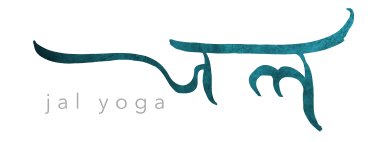What it is and how it benefits you

We’ve heard about the more popular yoga types such as Hatha, Ashtanga and Vinyasa, but are you familiar with Yin Yoga? For most of us, this type has had less visibility compared to the others and as a result, relatively unknown.
That’s not to say that this isn’t beneficial, or just a passing fad.
Contrary to that, it’s been around since the late 1970s, introduced by U.S. American Paul Zink. This originally incorporates elements from Taoist Yoga, which, taken from the Chinese Culture, incorporates the idea of Yin and Yang, alongside elements from traditional Chinese medicine.
Without delving deeply into the philosophical, Yin is seen to embody all that is ‘cold’, ‘passive’ and ‘slow’, whilst Yang embodies the ‘hot’, ‘active’ and ‘fast’. Using this as a guideline, Ashtanga and Vinyasa yoga can be classified as Yang, with Hatha just falling short of being considered Yin.
Despite being derived from Chinese tradition, Yin Yoga does not have an implicit tie-in with Taoism. The movement did not originate from China, nor does it have a history that spans centuries.
So what does Yin Yoga fully encompass to be called as such?
Firstly, it would be the duration each pose is held. For the Yang types, poses are held up to 3 minutes, with most typically shorter than that. Yin Yoga would require the practitioner to hold longer; 3 to 5 minutes normally, and 10 minutes in some instances.
Why do we need to hold the poses for such a long time?

This is where the second differential factor comes into play – Yin Yoga works on the connective tissues, rather than the muscles. Building muscle strength is one of the focuses of Yang types, whereas the goal for Yin is to target softer tissues (ligaments, tendons and bones tend to be classified as Yin tissues/softer tissues). These tend to have lesser blood flow to them and thus require a longer stretching time to receive the benefits of stretching.
With more time needed for warm-up, more time is needed to cool-down; thus the range of movement, circulation and flexibility tends to last longer.
Additionally, with the longer poses, it allows for the practitioner to focus and turn inwards actively, increasing calm and balance.
What do we need to know when practicing?

There are 3 main principles when it comes to practicing:
- Find your balance; take it slow when entering a pose and listen to your body before deepening the pose
- Be relaxed – it is important to avoid fidgeting as much as possible. If the pose is challenging, do consult the instructor
- When exiting a pose, do it slowly and gently
In the execution, props can be used to assist the poses at the start. It is thus important to note that when doing so, this is meant to increase or decrease the stresses on certain body parts where necessary.
In the long run though, over-reliance on props can be a sign that the poses you take are not suitable; you may need to review them and go for alternatives. This goes to show that Yin Yoga may also be challenging, and not just for older practitioners or newcomers.
Ultimately, Yin Yoga can be practiced daily and is a complementary type to the Yang types – it further enhances the benefits from your normal practices. Both types are key to your overall well-being, as embodied in the traditional Yin-Yang motif.
If you’re keen to try Yin Yoga, book a class with us now!
For those of you who are already a regular practitioner, if you’re looking to deepen your practice in this meditative form of yoga, join us in our upcoming 80-Hr Teacher Training Course.



